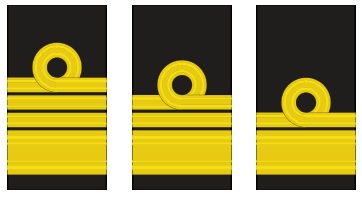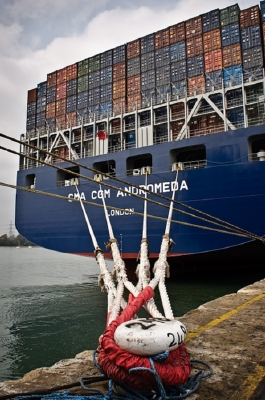If one were to survey the different flags of the world, one general design would surely emerge as the most common by some margin. The British ensign (and variations thereof) have been used in many capacities since 1864 for both military and civilian purposes. Currently, the most recognisable surviving incarnations of the British ensign are the flags of the antipodes, pictured below:

Flag of New Zealand

Flag of Australia
Both of the above flags represent interpretations of the blue ensign. Most countries that once formed part of the British empire are bound to have at least one British ensign in it scrapbook of historical flags, since particularly the blue ensign was used to identify British Overseas Territories (for instance the British Leeward Islands). Of course, regarding Australia and New Zealand, the British Monarch to this day remains the head of state – this is also the case with Canada, which up until 1965 used a variation of the red ensign as its national flag (below), before adopting its current distinct maple leaf banner.

The Canadian national flag until 1965

The flag of the Union of South Africa until 1928
A third common variation of the British ensign, the white ensign, has been used by the Royal Navy since 1801 (below). It has also been adopted by various other navies across the world formerly associated with the British empire. According to a 1931 memorandum from the Admiralty (i.e. navy HQ) “the White Ensign is nothing else but the national colours of a ship of war in commission”. The history and origins of the British ensign and its blue, red and white colour variations is interesting, given its prevalence as a flag that represents the immense scope of former British dominance.

The White Ensign of the Royal Navy
By the 17th century, the British navy had grown in prowess and numbers to the extent that commanding the entire fleet was an unwieldy business. Thus, the fleet was divided into three different groups, known as squadrons. In order to distinguish the various squadrons during battle, their constituent vessels were assigned red, white and blue flags – in that order of seniority. Thus, the most distinguished admiral would command the red squadron, but also be in overall command of the fleet, while the most junior admiral would command the blue squadron (in fact, each squadron had three flag officers: an admiral, vice-admiral, and rear-admiral).

The modern-day rank insignia of (l-r) an Admiral, Vice Admiral and Rear Admiral
The promotion of officers also took place according to this three colour system: a rear-admiral of the blue (the most junior flag-officer) would receive his first promotion to rear-admiral of the white, then rear-admiral of the red, after which he could be promoted to vice admiral of the blue – the most junior vice-admiral rank (Nelson was a vice-admiral of the white in 1805 at Trafalgar). As the British navy and empire expanded through the 18th and 19th centuries, squadrons grew into fully fledged fleets of their own and the strict hierarchical system of flag officers became somewhat restrictive, leading to its abolition in 1864.
Despite the abolition of the squadronal system the red, white and blue flags were retained by the navy, albeit with new meaning. Merchant vessels were assigned the red ensign, the Royal Navy the white ensign (see illustration above) and auxiliary vessels the blue ensign. Broadly speaking, auxiliary vessels were those ships that were not fulfilling military or merchant duties and were generally associated with government departments and the Royal Naval Reserve, but also the colonial service … hence the adoption of the blue ensign by so many British overseas territories (it has, however, become apparent to me that there are as many exceptions to the above-mentioned three categories as there is conformity).

A typical example of a Blue Ensign for governmental use: Her Majesty’s Coast Guard

… and Her Majesty’s Customs and Excise
Regarding the adoption of the red ensign by certain colonies and overseas territories (such as Canada and the Union of South Africa) I have not found any rules or regulations pertaining to its official use. However, it has been suggested that in the larger colonies increased economic activity and exports of raw materials grew to such an extent that commercial maritime traffic became much more frequent and regulated in comparison to colonial backwaters such as small islands. Thus, the commercial ships of these colonies were granted the privilege of adopting the normal red merchant ensign and defacing it with the badge of their respective territory. This hypothesis is certainly supported by the fact that Canada, South Africa, Australia, New Zealand and India all at one stage had as their national flag the red ensign, in addition to being the most significant centres of economic activity in the British empire.

The container ship Andromeda in port. Her immense size dwarfs the red ensign flying from her stern.
Thus my convoluted and decidedly amateur account of the history and use of British ensigns draws to a close. I therefore think it is only apt to end with an ensign which combines the tri-colours of red, white and blue while defying all regulation of their proper use (at least according to what I’ve written on this page).

The flag of Hawaii.
















